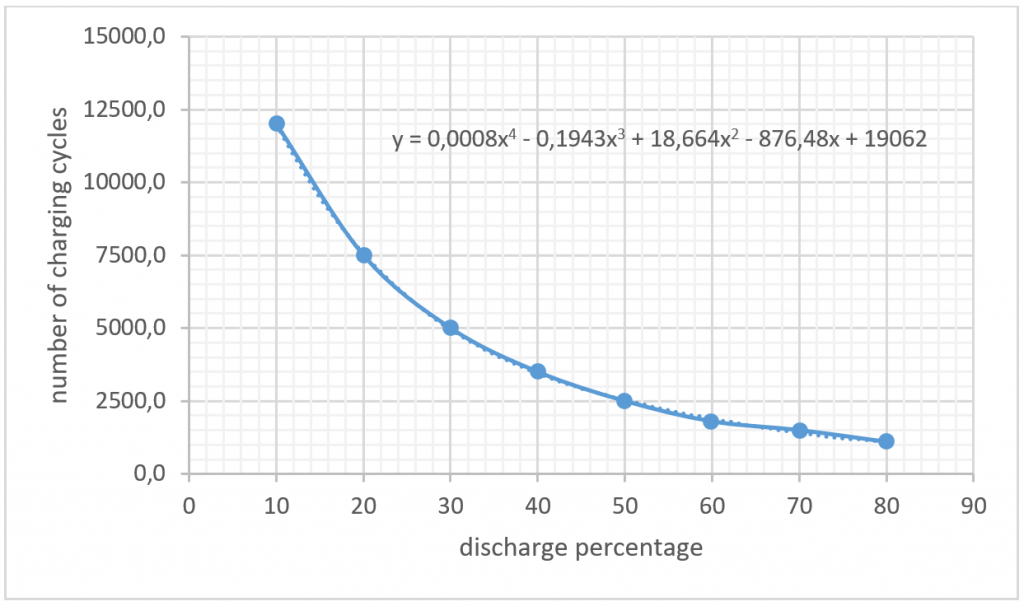Makes electric independence more affordable and eco-friendlier than led and lithium.
The European Union funded scientific work on Redox flow batteries already years ago. You might have heard of Redox Flow batteries. Maybe you have seen Barack Obama being proud of saying out loud vanadium flow battery in his interview.
It seemed promising. But often it can take ages to get new inventions on the market.
An Australian company named VoltStorage will sell it from January 2019 on in Germany. And the best is, it comes up with an open price strategy. Vanadium redox flow technology has been proofed but isn’t the most environmentally friendly system. We will be waiting for the quinones for battery storage on the market.
What do I need to know about batteries (short non-scientific overview)?
V Ah kWh kg € €/kWh Cycles
These are physical values which you’ll get a feeling for in this article.
Let’s take led batteries for instance. No matter if gel, glass mat or whatever.
It is important to understand how the life cycle of this batterie typically looks like.

Following this graph, you get between 2000 and 3000 cycles (charge and discharge = one cycle) out of a led acid battery if you discharge it 50 %. You might be able to use it maximum 8 years (1 cycle per day).
If the nominal Value of the battery is 100 Ah with 12 V, you should barely ever use more than 50 Ah. (About 11,5 V)
Victron Energy promises 5000 cycles for the LiFe battery with a discharge of 50 %.
To compare prices, you need the potential Work the batterie can do in kWh or Ah with a certain Voltage. In the following tables are my results. I searched in 2015 and 2019.

In 2015 you could buy led aced 12 V batteries for about 1,1 Euro per Ampere hour (€/Ah).

For Lithium the price Range was about 15 €/Ah.

Redox Flow Battery
The scientists and the producers promise more deep discharge resistance and longer lifetime for RFB.
To compare the prices of LiFe and Redox battery we can calculate the invest for the 6 kWh Redox Flow battery of 7000 € minus 850 € for the inverter with Wi-Fi interface. The Redox Flow (RFB) sums up to about 900 € per kWh storage. This is little more than a cheap Lithium battery. In comparison with the Victron energy Lithium battery the Redox flow batterie is even cheaper.
Taken the Lifetime into account the RFB is almost half the Price of Lithium batteries.
What do I need to be energy independent / off grid?
First you need to have a favourably south facing surface. The photovoltaic panels are about 70 cents per Wpeak. The number of panels should be dimensioned such as the local radiation is balanced to the need charged during a cloudy day. In Germany 10 m² can be an approximation. The strings can be designed such as the Voltage is comparable with the charging voltage of the RFB around 30 V. Additionally you’ll need a direct current regulator with max power point tracking (MPPT). Please consider the weight of the RFB if you want to install it in upper floors. Take into account the needed wiring. Wires can be estimated between 1 or 5 Euro per meter depending on the maximal load. The connectors are about 5 € per piece. To ensure safety measures fuses should be added to all circuits.
- PV-Modules
- MPPT
- Batterie
- Inverter
- Place and construction
- Wires and Connectors
- Fixation
- Fuses and local safety measures of all kinds
Is it possible to have photovoltaics in an apartment?
It’s is so easy. Endless plug and play solar solutions are on the market. The efficiency is questionable. You simply plug the box to your apartment grid and you go solar. The unshaded balcony and the façade could be a perfect spot.
How much does electric independence / off grid living cost?

It is possible that electric independence will cost you less than 10000 € if you’re are handy and enjoy DIY stuff.
How long does it take until I safe money with Photovoltaics?
It’s up to you. There might be days where you don’t have enough energy to serve all your needs and others where you have plenty.
15-20 twenty years return on invest could be possible.
For how long this storage supplies my household?
A washing machine 30 °C needs about 1 kWh of electricity to wash your laundry. Your laptop consumes maybe 100 W. If you run it all night, let’s say for 10 hours this sums up to 1 kWh. A small efficient fridge might use 2 kWh per day. Now you have 2 kWh left for lightning, TV, dishwasher and so on. This might give you a sense for the energy stored in this battery bank / house battery. With the 1.5 kW inverter which produces 230 V alternating currant you can run any machine in your house and garden. Only your stove might use higher power if you switch on several pots and the oven.
How much energy is one kilowatt-hour kWh?
To raise awareness of the amount of energy we consume. A human has a max. power output of ca. 150 W. That means you must sit on your bike with a generator for 6 hours to produce 1kWh. To charge the 6 kWh RFB 3 adult humans have to paddle for 12 hours.
In Germany, one kilowatt-hour of electricity from the grid (coal/lignite, bio and natural gas, hydro / water and wind – power mix during the night) costs ca. 30 cents. In France it’s is sometimes less than 15 cents/kWh.
If you go by your 1 t car 100 kilometres you spend 100 kWh.
I wish a smaller scale battery without Wi-Fi will arrive on the market soon for those you can’t spend 7000 € and consume less energy.
